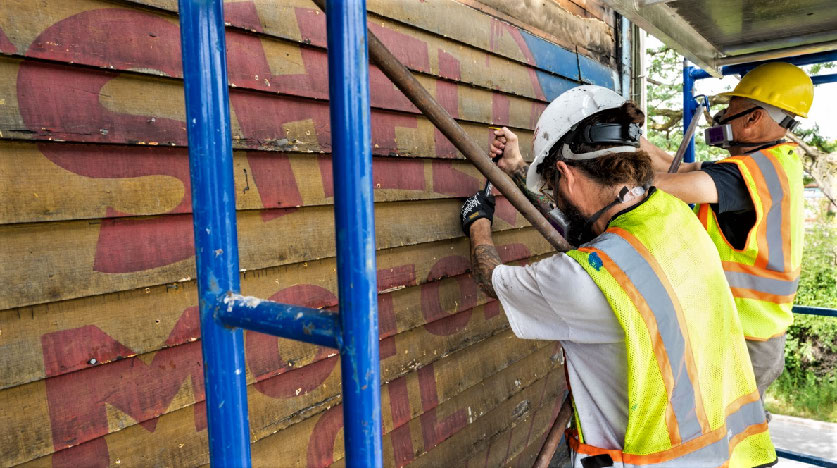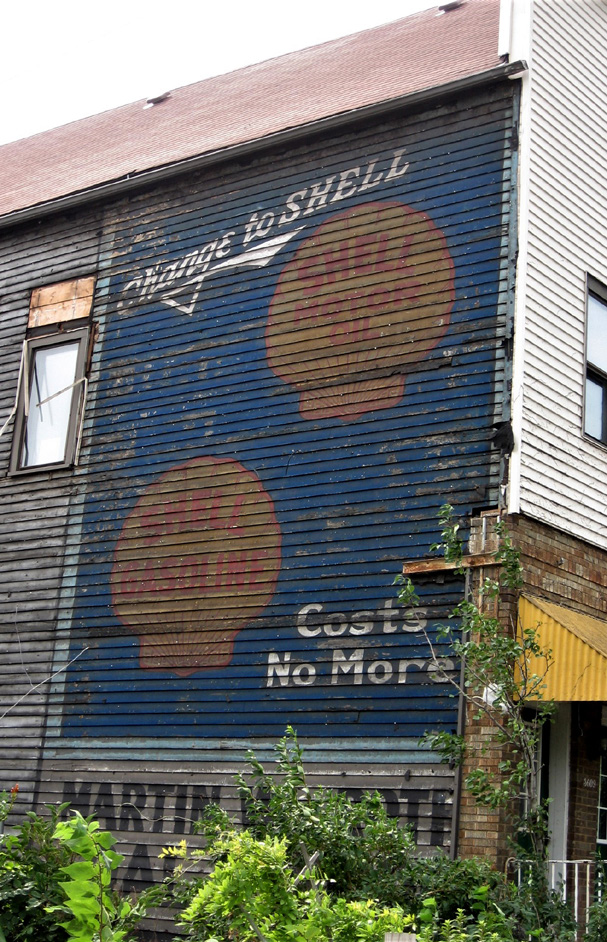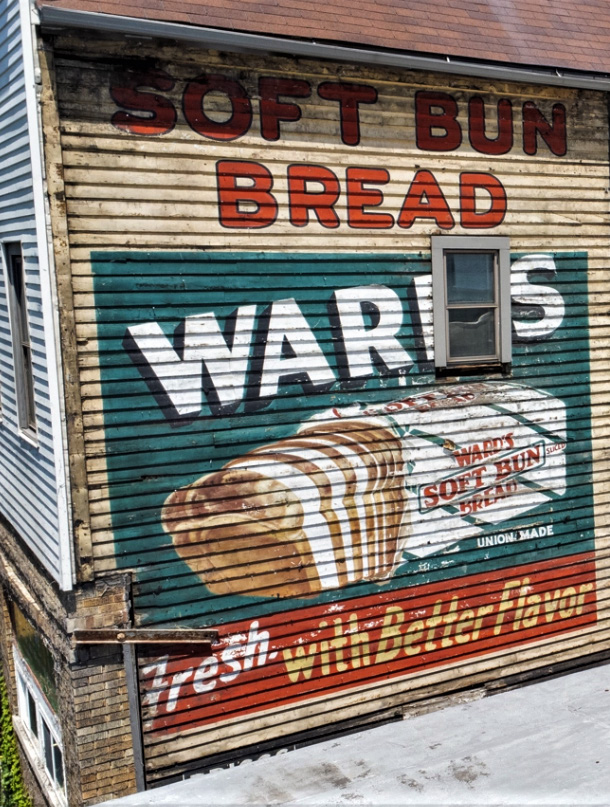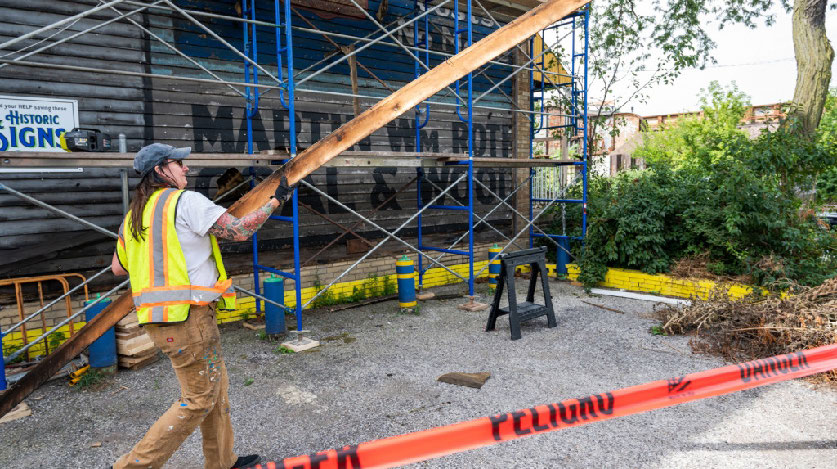“Lumbering” Into the Past: Fantastic Chicago Ghost Signs Uncovered
Last summer, Bob Behounek, a retired sign painter, discovered three ghost signs on wood-siding boards about eight inches in height. Advertisements on this material are rare, usually limited to fences and water tanks atop buildings. The signs were in remarkably fresh condition and exposed when a newer siding was removed as a step in the tear-down of a house built in the 1880s.
The two large color ghost signs are about 20 x 20 feet: one advertised Shell Oil, and the other, Ward’s Bread, a predecessor of Wonder Bread. The smaller ghost sign consisted of lettering covering both sides of the building that marketed a gas station on the corner.

The Shell sign reads from top to bottom,” Change to Shell,” “Shell Motor Oil,” “Shell Gasoline,” and “Costs No More.” But don’t they all cost more now! There is a small gas station ad below the Shell ad, which is essentially a duplicate of the one further east on the north wall.

The Ward’s sign, presumably a few years newer than the Shell sign and easier to read, advertised Ward’s Soft Bun Bread, “Fresh with Better Flavor,” and pictured a loaf touted as “Union Made.” The Ward’s advertisement was signed by Jack Briggs, an influential painter with his own company and who was later a partner in an early important Chicago sign company, Beverly Signs. Briggs was known for his inventiveness in color and design, and the bread advertisement is his earliest known preserved sign.

Behounek contacted the media, and the signs became a minor sensation as TV and radio stations publicized them as a look back into Chicago’s history. “This is a once–in–a–lifetime piece,” Behounek said. “I don’t know if they will ever find another like this in the city. This discovery is the Holy Grail for the outdoor advertising business here in Chicago.”

So, what happened next? Behounek and three sign painter friends developed an ad-hoc committee to save the signs. Kelsey McClellan, the co-owner with her husband, Andrew, of the Heart and Bone Sign Company, created a “Go Fund Me” campaign to raise $20,000. They had local cultural historian Tim Samuelson date the signs to the 1920s or 1930s and contacted Tod Swormstedt, founder of the American Sign Museum in Cincinnati. “It’s going to take a lot more love and care to remove the siding, but I think it will be worthwhile,” Swormstedt said.

Besides a successful fundraising drive, the preservation effort had great luck. The ghost signs had been covered by siding that contained asbestos. To tear down this fragile building without removing the asbestos siding covering the wooden boards would have diffused hazardous dust into the neighborhood. So, the cover pieces came off to reveal the ghost signs.
Did you enjoy this article? Join the SCA and get full access to all the content on this site. This article originally appeared in the SCA Road Notes, Winter 2022, Vol. 30, No. 4. The SCA Journal is a semi-annual publication and a member benefit of the Society for Commercial Archeology.
More Articles Join the SCA


